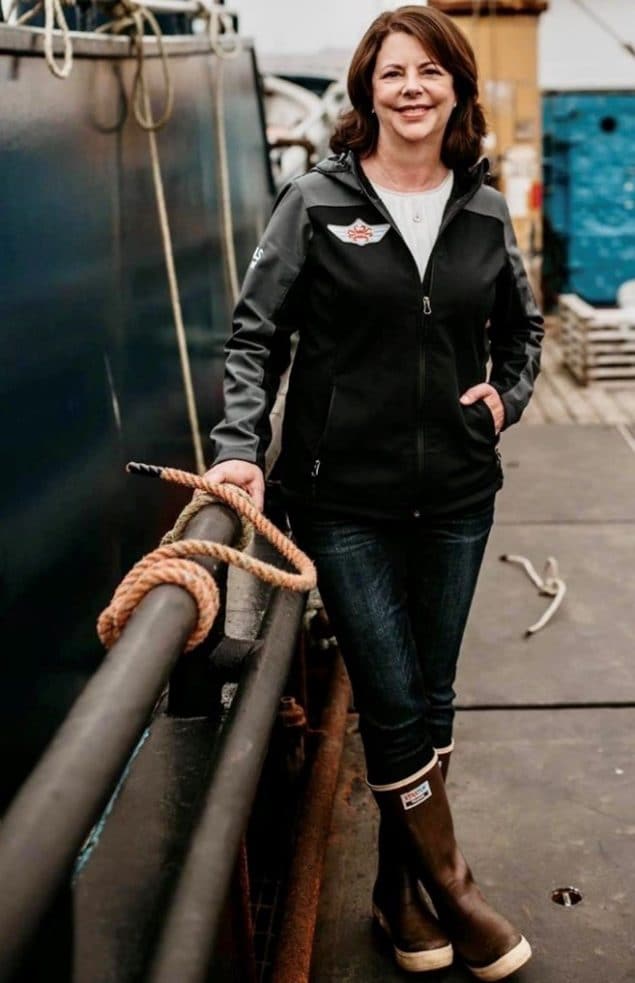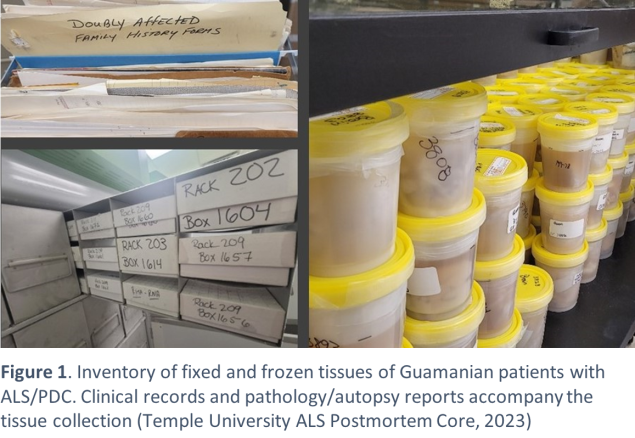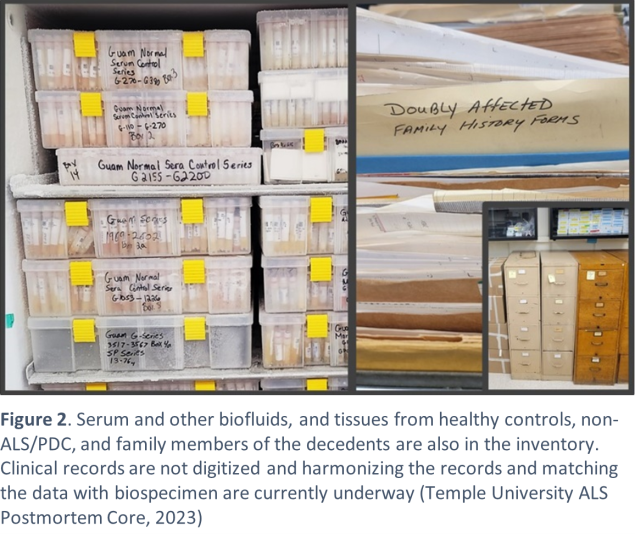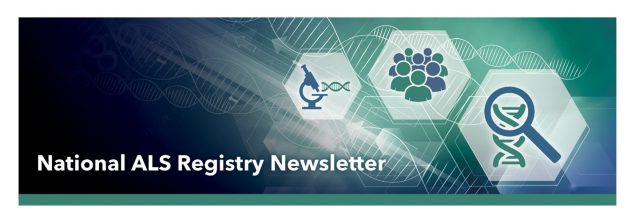The National ALS Registry Newsletter- Winter 2023
Sign Up for Our Newsletter
Want to learn more about the National ALS Registry? Sign up to stay up-to-date with the Registry
Joining the National ALS Registry offers the chance to participate in research and be counted.
Caregiver Spotlight: Jennifer Gore Dwyer

For National Caregiver’s Month, the National ALS Registry recognizes a truly inspirational individual, Jennifer Gore Dwyer. We hope her work with the ALS community and as a caregiver for a person who had ALS can provide insight for those beginning their journey as a caregiver.
Journey with ALS
Jenny was born and raised in Ketchikan, Alaska, around the fishing industry. She went to college in Washington state and earned a degree in Culinary Arts, a path that eventually brought her back to Ketchikan and introduced her to the love of her life, Pat Dwyer. Pat and Jenny were married in 1987 and have two adult children Brenna and Sean. Together, Pat and Jenny built the fishing business St. George Marine.
In June of 2005 at the age of 44, Pat was diagnosed with ALS. Jenny could still remember the day Pat was diagnosed vividly, down to the red polo shirt he was wearing. This diagnosis was particularly devastating to them because Jenny had battled a rare form cancer of the appendix 10 years prior and underwent chemotherapy and surgeries for 3 years. This was a cruel blow for Pat to now be diagnosed with ALS diagnosis. With cancer you have hope, whereas with ALS you have a different story.
Pat’s ALS progressed slowly. The disease started with his left hand and eventually spread to his other limbs. The Dwyer family became “all-hands-on-deck” when it came to caring for Pat, doing whatever it took to make Pat’s life with ALS livable. Early on in their disease journey, when Pat’s friends asked what they could do to help, Jenny told them to “just continue to be his friend. Continue to call him and drop by.” With the help of family and friends, Pat was able to continue living a life of laughter, grace, and patience, for most days. Pat eventually passed away in June of 2013, he was 52.
Looking at her journey with Pat’s ALS, Jenny offers the insight that Pat wanted to be treated normally, as if he wasn’t living with ALS. He wanted to work as long as he could, hang out with “the boys,” and be actively involved in his children’s lives. Pat was a master engineer and mechanic, the neighborhood go-to guy for fixing anything. He still wanted to be that guy despite living with ALS.
Work in ALS advocacy
After his ALS diagnosis, Jenny and Pat immediately became involved with ALS advocacy. They leveraged their local network that they created lobbying for the fishing industry in Alaska and began working with the ALS community locally and eventually expanded nationally.
Jenny’s proudest accomplishments and real love come from helping pass ALS legislation on a national level. When Jenny’s husband Pat was diagnosed with ALS in 2005, Senator Murkowski reached out to ask how she could help with ALS on the legislative side. Through the efforts of Senator Murkowski and many other ALS advocates, Jenny was instrumental in helping pass the ALS Registry Act, the Steve Gleason Enduring Voices Act, the ALS Disability Insurance Access Act, and the Accelerating Access to Critical Therapies for ALS Act (ACT for ALS). Additionally, Jenny’s work with ALS advocates have also helped increase funding for the Department of Defense’s ALS Research Program (ALSRP).
Jenny is currently a board member of the ALS Therapy Development Institute. She was asked to join the board in 2013, about 6 months after her husband Pat passed away. In her words, “It was one of the easiest yes’s I had had in a long time.” Her husband loved the Institute’s innovativeness and nimbleness with regards to ALS research, and they both supported the Institute while he was alive. Jenny is also currently involved with the ALS Association and I AM ALS, as well as being a co-founder of the grassroots advocacy group, More Than Our Stories.
Jenny continues to be involved in the ALS community by reaching out to those recently diagnosed with the disease. In her own words: “Every conversation I have with a family member of someone newly diagnosed helps to heal my heart. If my words can help even one person, I will feel like I’ve made a difference with this horrible disease.”
Advice for Caregivers
When asked about how her ALS experience could help others, Jenny said,
“My main advice would be to take one day at a time. Sometimes it’s even one minute at a time. ALS is hard. It takes so much from everyone in the family of the person who is living with ALS. It’s ok to be mad, sad, and teary at times. Be sure you allow those feelings to be a part of your days if they arise. But don’t dwell on them too long. Just acknowledge that they are there, and go throw a pillow at the wall. It helps.
The other advice I would give would be to enjoy the moments and days that are filled with laughter and good things. Those are the days that keep you going.
Some other random advice: let the person living with ALS make his own decisions as to what they want, set their routines (if possible) and have as much control over their disease as possible. Asking for help is hard, but lean on friends and family. They want to help but don’t know how. Give them a weekly task, something that will take pressure off of you. A couple of the neighborhood kids came by once a week to scoop up our dog’s dog poop for us. That was huge. Take notes at your ALS clinic visits; they will come in handy as the disease progresses. If your person is taking any medication, as much as you can keep track in a notebook of when and how much they took, and if they had any weird side effects. Again, it will come in handy as the disease progresses. Lastly, hug each other as much as you can. Trust me, there will be days when you don’t even want to look at each other. But once that ability to hug each other is gone, you will have those “hug it out days,’ to carry you through.
As a caregiver you will be wearing many different hats. It will be hard. For me, it was a labor of love that I felt so honored to do. I got by with help, humor, grace, and love…and Pat. I think some days he handled his ALS better than I did.
If you are a caregiver reading this, you got this, and I’m sending support to you from afar.”
If you would like to nominate someone to be highlighted in the newsletter, please email ALS@cdc.gov
Biorepository donation from Guam study provides unique research opportunity in possible environmental and genetic factor links for developing ALS and related disorders

Background
In 1869, the French neurologist Jean-Martin Charcot first recognized the neurodegenerative disorder amyotrophic lateral sclerosis (ALS). Today, we still have much to learn about the disorder commonly known as “Lou-Gehrig’s Disease.” However, roughly 15 years ago in 2008, a Congressional Mandate resulted in the creation of the National ALS Registry, or the Registry, to better measure how many people develop the disease—or its prevalence—and understand its etiology, or the causes and risk factors related to ALS. The most recent prevalence report by the Centers for Disease Control and Prevention (CDC) estimates that about 30,000 adults (18 years old and older) have the disease in the United States, or about 9 out of every 100,000 people. ALS progresses rapidly to paralyze muscles involved in movement, including breathing, and take the lives of people within 2 to 5 years of their diagnosis. We have learned that 1 in 10 people with ALS inherited specific genes that have mutated, or changed, to cause ALS. However, what causes the remaining cases is still unknown.
To further support and increase ALS research, the Registry created the National ALS Biorepository, or the Biorepository. ALS patients donate biofluids and tissues after they have enrolled in the Registry and consented to participate. The Biorepository accepts requests for biological samples or specimens from domestic and international researchers for their work on identifying biomarkers and therapeutics. Currently, about 1,500 ALS patients have donated specimens to the Biorepository.
National Institute of Health ALS-related study specimens and clinical records from Guam added to the Biorepository

In late 2022, the Registry, in partnership with Temple University ALS Postmortem Core, acquired a donation of biological samples and detailed clinical records of an isolated population of people in Guam who developed ALS at a higher rate than any other population. This collection, which had been curated by Dr. Ralph Garruto of Binghamton University until this donation, presents a unique opportunity to study the link between environmental factors and genes. These biological samples come from people in Guam who were diagnosed with amyotrophic lateral sclerosis/parkinsonism-dementia complex (ALS/PDC) and contains samples from their family members also. The National Institute of Health (NIH) collected the biospecimens from individuals as the disease progressed (longitudinal specimens), as well as clinical and pathological records over several decades from 400-500 people, all of which are included in the donation. In addition, the collection includes postmortem tissues from people who died of the disease.
Unique Potential Environmental and Genetic Link
Research began in the early 1950s when scientists noticed an unusually high incidence of ALS and a combination of parkinsonism dementia in the indigenous Chamorro people of Guam, which the local people referred to as Lytico-Bodig. The Chamorro people had ALS at an estimated rate of 50 to 100 times higher than the prevalence of other populations known at the time. A review of the research on pedigree, or lineage, from one of the affected villages suggested the disorder may be inherited since there was a greater frequency for Chamorro family members to develop the disease. However, researchers observed that not all family members would get ALS/PDC. Moreover, there were documented cases in migrants to Guam who had different genetic backgrounds. Over the following decades, there was a sharp decline in the number of cases which baffled researchers. This remains perplexing to this day.
One theory about the cause of cases in Guam involves cycad seeds. Scientists have speculated that the isolated population in Guam may have been more genetically sensitive to toxins, such as BMAA (β-methylamino-L-alanine; a non-protein amino acid produced by cyanobacteria from the cycad seeds) found in cycad seeds. Their bodies may have accumulated BMAA from diets that largely contain a great deal of cycad seeds, including eating fruit bats that forage on them, and the practices of using the seeds for medicinal purposes. This observation is referred to as the “cyanobacteria/BMAA hypothesis.” Furthermore, high levels of protein bound BMAAs were found in the brains of Guamanians who died of ALS/PDC, which suggests that BMAA is an environmental neurotoxin and a potential cause for developing ALS/PDC.
A huge value added to ongoing ALS research
An immense effort is underway at Temple University ALS Postmortem Core, where the collection will be housed, to organize and convert the extensive paper records into digital information. Once digitized, the specimens and information will become more readily available to ALS researchers through the National ALS Biorepository.
This rare collection of biospecimens and clinical information from a documented epidemic and its decline over a short timespan significantly adds to the United States and global ALS biorepository pool. Since there is no cure for ALS and the cause for most cases remains unknown, biospecimens from this geographically isolated population are a valuable resource for researchers to continue investigating the interaction between genes and environmental exposures in the development of ALS.
National ALS Registry 2023 Annual Meeting Update
The National ALS Registry has held its annual meeting since 2011. This meeting has been an important way for neurologists, researchers, advocacy groups, and especially patients and caregivers, to provide guidance and direction for the Registry’s initiatives.
The meeting was held on August 29th and 30th this year and was open to the public for both days. This year’s meeting was moderated by former CEO of the Les Turner ALS Foundation, and Founder of ALS Strategy Consulting, Andrea Pauls Backman, and included updates from the Registry’s many research partners, four people currently living with ALS were invited to speak, and a forum for open discussion for the public to participate in. The 2023 Meeting was again an immense success, this year with over 280 registrants and a positive response from all who attended.
The meeting agenda, transcript of the Q&A questions, and summary report can be found at the Registry’s website at: https://www.cdc.gov/als/AnnualMeetings.html
New ALS Disease Estimate Report for 2018 Data
ATDSR is continuously looking for ways to improve and update the methodologies by which the disease is tracked in the United States. The National ALS Registry recently published its latest findings on prevalence of ALS in the United States. Current estimates revealed approximately 30,000 cases of ALS in the United States in 2018, resulting in a prevalence of 9.1 cases per 100,000 people. Demographically, cases of ALS show similar trends as in previous years, with observed cases being predominantly white (71%), males (60%) over the age of 50 (75%). A revised capture-recapture methodology (CRC) was used this year to improve the case ascertainment for the National ALS Registry.
The Registry continues to strive in adjusting, adapting, and improving methods to evaluate and describe ALS cases in the United States. The 2018 report can be read at the https://www.cdc.gov/als/National_disease_estimates.html, along with an FAQ to explain frequent questions about the disease reports.
2023 ALS Registry Research Update
Research is critical to helping scientists and persons living with ALS better understand the disease. The overarching goal of the research is to examine potential risk factors for developing ALS. One of the fundamental functions of the National ALS Registry is to provide researchers with data to aid in pushing ALS research further along and to help fund said research.
2023 has been a remarkable year in expanding research projects for ALS.
- To date, the Registry has been involved in six new publications of ALS research, ranging from comparing National ALS Registry data with state ALS registry data to a roadmap of ALS prevention strategies.
- Additionally, the Registry has funded, through ATSDR’s research grant funding mechanism, two brand new ALS research projects by the University of Michigan and the ALS Therapy Development foundation to look at different ALS risk factors.
- ATDSR is also currently accepting applications for a brand-new grant opportunity to “Identify and Evaluate Potential Risk Factors for Amyotrophic Lateral Sclerosis (ALS)”
- Finally, the Registry’s Clinical Trial Notification system is helping four new clinical trials in 2023 recruit for study participants.
The National ALS Registry is steadfast in its commitment to push ALS Research along and continues to count on researchers and Registry members to participate.
You can learn more about the new research in 2023 involving the Registry at the following links:
External Research funded by the National ALS Registry
Active ALS Research Notification for Clinical Trials and Studies

We want to hear from you
Have any questions or feedback on our newsletter?
We invite you to reach out to us.
als@cdc.gov
